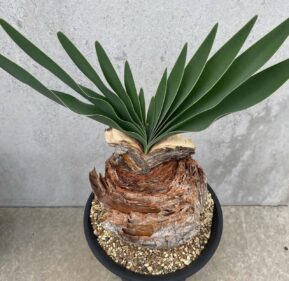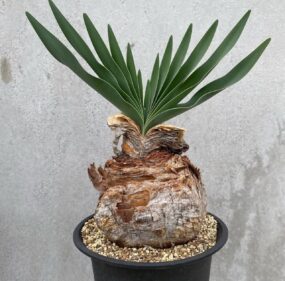Total $100.00
Discover the beauty and care of Boophane disticha, a unique flowering plant. Explore our expert tips and insights on growing and nurturing this fascinating species.
Boophane disticha is a captivating plant species known for its unique appearance and medicinal properties. This remarkable plant, often referred to as the Cape Poison Bulb, belongs to the Amaryllidaceae family and is native to South Africa. Fb caudex group .In this article, we will explore its various aspects, including its botanical characteristics, ecological significance, medicinal uses, and conservation status, all while understanding why Boophane is becoming an increasingly popular subject of study among botanists and herbalists alike.Order your boophane at:caudexplants.com

Boophane disticha is a perennial bulbous plant that thrives in the semi-arid regions of South Africa, particularly the Western Cape and Northern Cape provinces. It is most commonly found in rocky outcrops, often in areas with a Mediterranean climate, which means hot, dry summers and mild, wet winters.Purchase your caudex plants from :caudexplants.com
The plant features striking characteristics, especially its large, glossy leaves and vibrant flowers. The leaves are typically linear and arching, growing up to 60 cm in length, and are arranged in a rosette-like pattern. Its flowers, which appear in the late spring to early summer, are bell-shaped and have a bright pink to red color. These blooms often attract a variety of pollinators, including bees and birds, adding to its ecological importance.
One of the most fascinating aspects of Boophane is its medicinal properties, particularly in traditional African medicine. The bulb of the plant has been used for centuries to treat a range of ailments, including fever, malaria, and various infections. However, it is important to note that Boophane is also highly toxic. All parts of the plant, especially the bulb, contain toxic alkaloids that can be harmful if consumed in large amounts.
The primary alkaloid in Boophane is lycorine, which can cause nausea, vomiting, and even respiratory failure if ingested improperly. This toxicity is a double-edged sword, as it requires careful handling, yet its medicinal benefits have led to ongoing research into how these compounds can be used in controlled doses for therapeutic purposes.
In its native habitat, Boophane plays a crucial ecological role. The plant is well-adapted to survive in harsh conditions, particularly in areas with limited water availability. Its bulbous structure allows it to store water, ensuring its survival during the dry summer months. This adaptation not only makes it an interesting species to study but also highlights its resilience in the face of climate change.
Moreover, the flowers of Boophane contribute to the pollination of local insect species. The plant’s vibrant flowers are particularly attractive to bees and other pollinators, which helps to maintain the biodiversity of the area. By supporting the health of pollinator populations, Boophane disticha indirectly supports the broader ecosystem.
Beyond its ecological significance, Boophane is also sought after in horticulture and landscaping. Its striking appearance, particularly its large, arching leaves and vivid flowers, makes it a desirable ornamental plant for gardens and public spaces. Gardeners often use it in dry garden designs or as part of xeriscaping projects due to its drought-tolerant nature.
However, cultivating Boophane in non-native areas requires careful consideration. The plant’s toxic nature means it must be handled with care, especially in public spaces or areas where children and pets may have access. It is essential to ensure that its toxicity is well understood and managed by gardeners and landscapers.Shop boophane here :caudexshop
Due to its relatively limited geographical range and specific growing conditions, Boophane is considered a species of conservation concern. Habitat destruction, particularly from urban expansion and agricultural development, poses a significant threat to the natural populations of this plant. In some regions, overharvesting of the bulbs for medicinal and ornamental purposes also threatens its survival in the wild.
Conservation efforts are critical for preserving Boophane disticha in its natural habitat. The South African government, along with various conservation organizations, has initiated programs aimed at protecting the plant and its habitat. These programs focus on sustainable harvesting practices, habitat restoration, and raising awareness about the importance of preserving this unique species.

Ongoing research into Boophane is focused on understanding its medicinal properties and how to harness its toxic compounds for medical purposes safely. Lycorine, the primary alkaloid, has shown potential in treating a variety of health conditions, including cancer and viral infections. Researchers are exploring ways to isolate and use lycorine in controlled environments to minimize its toxic effects.
Furthermore, there is growing interest in the use of Boophane in phytochemistry and drug development. By studying the plant’s biochemical compounds, scientists hope to uncover new therapeutic agents that could benefit modern medicine. This research is still in its early stages, but the potential benefits are vast.
In addition to its medicinal and ecological importance, Boophane holds cultural significance in various South African communities. The plant has been used in traditional rituals and ceremonies, often associated with healing and protection. In some cultures, the plant is believed to have spiritual significance, and its use in herbal medicine is seen as a way to connect with ancestral knowledge.
The cultural value of Boophane underscores the deep connection that indigenous people have with the plants in their environment. This relationship has been nurtured over centuries, with generations of knowledge passed down about how to use the plant safely and effectively. As interest in indigenous plants grows globally, Boophane is increasingly recognized not only for its scientific value but also for its cultural and historical importance.Buy caudex plants from:caudexstore
Looking ahead, there is immense potential for Boophane to play a role in sustainable agriculture and alternative medicine. Its ability to thrive in drought-prone regions makes it a valuable candidate for agricultural studies focused on water conservation and soil management. Additionally, the exploration of its medicinal compounds could lead to breakthroughs in the treatment of various diseases.
However, balancing its potential uses with the need for conservation will be key. Ensuring that Boophane disticha remains a viable species in the wild will require ongoing research, sustainable harvesting practices, and habitat preservation. As the plant becomes more recognized globally, both its ecological and economic value will likely grow, but so too will the need for careful management.Purchase boophane from ;caudexshop

Boophane disticha is a remarkable plant with a wide range of potential applications. From its stunning appearance to its fascinating medicinal properties, it offers something for botanists, herbalists, ecologists, and conservationists alike. However, like many plants with potent compounds, it must be handled with care to avoid its toxic effects.
Whether used in traditional medicine, modern research, or landscape design, B disticha continues to captivate the imagination of those who encounter it. As we continue to explore its many facets, it is clear that this unique plant holds promise for the future—if we take the necessary steps to ensure its preservation and responsible use.